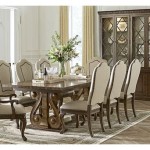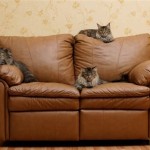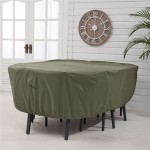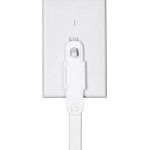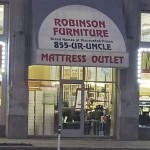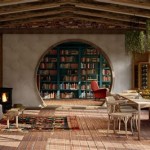Baseboard Register Deflectors Under Furniture: Maximizing Heating and Cooling Efficiency
Baseboard registers are a common feature in many homes, providing a cost-effective and space-saving solution for heating and cooling. However, their low placement often results in inefficiency, particularly when furniture obstructs the airflow. This obstruction can lead to uneven temperature distribution, increased energy consumption, and ultimately, higher utility bills. Baseboard register deflectors placed under furniture offer a practical solution to mitigate these issues and optimize the performance of baseboard heating and cooling systems.
This article will explore the functionality of baseboard register deflectors, the problems arising from obstructed airflow, the types of deflectors available, installation guidelines, and key considerations when selecting the right deflector for specific needs. The aim is to provide a comprehensive understanding of how these simple devices can significantly improve the efficiency and comfort of a home.
The Problem of Obstructed Airflow from Baseboard Registers
Baseboard heating and cooling systems rely on the principle of convection. Heated air rises from the register, while cooled air descends. This natural circulation creates a consistent temperature throughout the room. However, when furniture – sofas, beds, dressers, etc. – is placed directly in front of or above a baseboard register, it disrupts this natural flow. The furniture acts as a barrier, trapping heated or cooled air and preventing it from circulating effectively.
The consequences of obstructed airflow are multifaceted. Firstly, the area immediately surrounding the register becomes overheated or overcooled, while other parts of the room remain at a different temperature. This creates uncomfortable temperature imbalances, forcing the heating or cooling system to work harder to compensate. Secondly, the system's efficiency is compromised. The thermostat, often located away from the obstructed register, may not accurately reflect the actual temperature in the problem area, leading to prolonged operation and increased energy consumption. Thirdly, blocked registers can potentially contribute to moisture buildup and the growth of mold or mildew in confined spaces, especially in humid climates.
The impact is not limited to immediate comfort. Over time, the increased strain on the HVAC system can shorten its lifespan and necessitate more frequent repairs. Addressing airflow obstructions, therefore, is crucial not only for immediate comfort but also for long-term cost savings and system longevity.
Types of Baseboard Register Deflectors for Under Furniture Applications
Various types of baseboard register deflectors are designed to address the problem of obstructed airflow. These deflectors are typically constructed from metal, plastic, or a combination of both, and are designed to redirect the airflow away from the furniture and into the room.
Standard Deflectors: These are the most common type, consisting of a simple angled piece of material that attaches to the register. The angle redirects the airflow upwards and outwards, preventing it from being trapped behind the furniture. Standard deflectors are generally inexpensive and easy to install, making them a popular choice for many homeowners.
Adjustable Deflectors: These deflectors offer greater flexibility, allowing users to adjust the angle of redirection. This is particularly useful when dealing with varying heights of furniture or specific airflow requirements. Adjustable deflectors often feature a series of hinges or pivoting points that allow for fine-tuning the airflow direction.
Magnetic Deflectors: Some deflectors utilize magnets for attachment, providing a secure and easy-to-install option. These are particularly useful for metal baseboard registers, eliminating the need for screws or adhesive. Magnetic deflectors are often designed with a low profile to minimize visibility.
Extended Deflectors: These deflectors feature an extended length, allowing them to redirect airflow further away from the register. This is particularly beneficial when dealing with large pieces of furniture that completely cover the register. Extended deflectors can be customized to fit specific dimensions.
Clear Acrylic Deflectors: Constructed from transparent acrylic, these deflectors offer a discreet and aesthetically pleasing option. They allow the register to remain visible while still effectively redirecting airflow. Clear deflectors are a popular choice for homeowners who prioritize aesthetics.
The selection of the appropriate deflector type depends on factors such as the size and shape of the furniture, the material of the baseboard register, and the desired level of adjustability. Careful consideration of these factors will ensure optimal performance and aesthetic compatibility.
Installation Guidelines and Key Considerations
Installing baseboard register deflectors is typically a straightforward process that can be completed by most homeowners. However, proper installation is essential to ensure optimal performance and avoid potential problems. Before installation, it is crucial to measure the dimensions of the baseboard register to ensure that the selected deflector is the correct size. It is also important to clean the register surface to remove any dust or debris that may interfere with adhesion.
For standard deflectors that attach with screws, carefully align the deflector with the register and pre-drill pilot holes to prevent cracking the register housing. Use appropriate screws that are not too long, avoiding damage to internal components. For adhesive deflectors, ensure that the adhesive surface is clean and dry before applying the deflector. Apply firm pressure to ensure a secure bond.
Magnetic deflectors are the easiest to install, simply requiring placement onto the metal register. Ensure that the magnets are strong enough to hold the deflector securely in place, especially in areas with high foot traffic. For adjustable deflectors, carefully adjust the angle of redirection to optimize airflow. Experiment with different angles to find the setting that provides the most even temperature distribution.
Several key considerations should be taken into account when selecting and installing baseboard register deflectors. Firstly, consider the material of the deflector. Metal deflectors are generally more durable and heat-resistant, while plastic deflectors are more lightweight and less expensive. Secondly, consider the aesthetic appearance of the deflector. Choose a deflector that complements the existing décor and does not detract from the overall appearance of the room.
Thirdly, consider the safety of the deflector. Ensure that the deflector is securely attached and does not pose a tripping hazard. Avoid deflectors with sharp edges or protruding parts that could cause injury. Fourthly, consider the maintenance requirements of the deflector. Choose a deflector that is easy to clean and maintain to prevent the buildup of dust and debris. Regularly clean the deflector to ensure optimal airflow and prevent the spread of allergens.
Finally, consider the long-term cost savings associated with using baseboard register deflectors. While the initial investment may seem minimal, the long-term benefits of improved energy efficiency and reduced HVAC system strain can significantly outweigh the initial cost. Implementing these guidelines ensures the effective use of baseboard register deflectors, maximizing heating and cooling efficiency in spaces with furniture.
Properly installed and maintained baseboard register deflectors can significantly improve the comfort and efficiency of a home's heating and cooling system. By redirecting airflow away from furniture and into the room, these simple devices can prevent temperature imbalances, reduce energy consumption, and prolong the lifespan of the HVAC system. By considering the factors outlined above, homeowners can select and install the right deflector for their specific needs and enjoy the benefits of a more comfortable and energy-efficient home.

Powerful Magnetic Air Vent Extender For Floor Under Furniture Adjustable From 13 To 38

Under Furniture Air Deflector Deflecto

How To Make A Diy Vent Extender For Furniture

Under Furniture Air Deflector Deflecto

How To Make A Diy Vent Extender For Furniture

What Is An Air Deflector For Baseboard Vents Do

Baseboard Air Deflectors At Lowes Com

Better Angling Of Baseboard Registers Doityourself Com Community Forums

How To Make A Diy Vent Extender For Furniture

Under Furniture Air Deflector Deflecto

